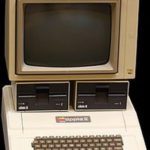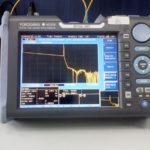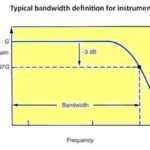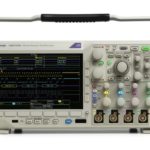Answers to a few basic questions can help clarify what kind of scope makes sense for your workbench.
JAMES MCGREGOR, NEWARK ELEMENT14
For many engineers, the oscilloscope is the most useful and versatile tool on the bench. So when it’s time to buy a new one, it’s important to make sure the scope meets your test and measurement needs. But before you go shopping, it might be helpful to bone up on the latest trends in test and measurement equipment based on what we’re seeing in our T&M unit at Newark element14. Some recent developments may affect the choices you make. And a quick checklist of tips and questions may help you make the right decision.
TRENDS IN THE OSCILLOSCOPE MARKET

The oscilloscope market has traditionally divided into two streams: Mainstream scopes that are completely adequate for most applications, and higher-end scopes that offer more sophisticated and precise measurements for research and specialized industrial applications. Within this range of capabilities, most manufacturers have kept prices in a sweet spot between $3,000 and $7,000 per scope.
But more recently, we’re seeing an expanded range of options at both the lower and the upper edge of the market. In addition to oscilloscopes that offer the basics, now priced at $2,000, there are also units priced upwards of $30,000 that allow engineers to take extremely precise measurements. Generally speaking, this trend shows the T&M industry is reacting to movements in the larger consumer market where customers want and expect more choices.
In turn, this increased range of options in the oscilloscope market amplifies the importance of T&M distributors for equipment manufacturers. Previously, engineers mostly had a short list of multi-use workhorse devices to choose from. But now, with a much broader range of choices, distributors offer equipment from a variety of manufacturers all in one place, so buyers get a fuller view of the options now available.
In terms of widely used functions, new touch-screen user interfaces on some of the higher-end oscilloscopes make the product more intuitive to use, and they can save users time when learning a new piece of equipment. Touch-screens also speak to a new generation of users—millennials—who expect a more interactive interface than traditional knobs and dials.
Additionally, there is a growing market for handheld oscilloscopes, which suggests that scopes increasingly find use in the field, not just in the lab. There is also a move from fixed-function T&M units to more modular, software-defined instrumentation, in which a standard testing device can change its functions by running software. Some higher priced equipment currently offers software options, but right now the software-defined approach to T&M equipment is mostly aspirational, and at the high end of the market. It will be a while until general-purpose oscilloscopes offer a modular software option.
One final trend observation: From a unit perspective, sales of T&M equipment is growing in North America, from an already strong position. This is consistent with reports that some high-volume manufacturing of consumer products, like smartphones, is returning to the U.S. Re-establishing these factories would require appropriate T&M instruments, which would account for an increase in demand.
TIPS FOR PURCHASING YOUR NEXT OSCILLOSCOPE
By answering four questions, you’ll be able to focus on what to look for as you go shopping for a scope.
What is the highest signal frequency you are likely to measure? It’s not enough that your oscilloscope is fast enough to capture the fastest signal you’ll need to measure – it needs to capture signals five times faster. That’s because your scope will need to measure the signal’s fundamental, third and fifth harmonics to accurately display the full digital signal. If you are testing for 100-MHz bandwidth, you’ll need five times that capacity in your equipment, or an oscilloscope rated for 500 MHz. Don’t forget that your scope’s measurement is only as good as the probe you use. It should have the same bandwidth as your scope, or better.
What is the fastest rise time you are likely to measure? Signal rise time is critical information when measuring digital signals; it’s also required for accurate timing measurements. The rise time for an oscilloscope is calculated as (k/bandwidth): for scopes under 1 GHz, k=0.35, for scopes over 1 GHz, k=0.40 or 0.45. The 5x rule applies here, too. An oscilloscope’s rise time should be one-fifth the fastest rise time of your signals. For example, to measure a 4-nsec rise time accurately, you need a scope with a rise time of 800 psec.
How many channels do you really need? The more channels on your oscilloscope, the more flexibility you’ll have for viewing and debugging circuitry, which can save time. On the other hand, the more channels you buy, the more your unit will probably cost. So plan accordingly. Two or four analog channels enable you to view and compare signal timings of multiple waveforms. Debugging a digital system with parallel data requires at least an additional eight or 16 channels. A mixed signal oscilloscope (MSO) adds digital timing channels, used to indicate high or low states and display them as a bus waveform. While having more channels than you need may cost a bit more, having fewer than you need will definitely cost you time.
How do you choose where you buy your equipment? When you’ve narrowed your choices and it’s time to make a purchase, here are three top considerations. First, select a distributor with a broad range of devices, with trained salespeople who deeply understand customer needs and can support your decision-making processes. Second, make sure the distributor you’re buying from actually has your product in inventory and has it available for next day delivery in case you need it quickly. If your distributor must order the instrument from the manufacturer before delivery to you, it will be a while before you get your scope. Third, ask if your distributor offers inside technical support free to customers. Your distribution partner should make itself relevant to you by offering a deep level of support and product expertise, all free.
With so many options available, online forums like the element14 community site also can provide reviews and evaluations, as well as provide opportunities to post questions and get advice from peers in the field.
References
element14 community site
Newark element14






One of the cool things about the latest generation of oscilloscopes is that you can add digital logic capability to them and still keep costs down. For example, you can add up to eight digital inputs to Rohde&Schwarz’ RTC 1000 Series for $xxx.
This capability can come in handy if you’re designing or troubleshooting embedded systems. For example, you can trigger on a combination of the logic inputs and see what an analog output is doing. Adding digital logic capability also lets the scope do serial protocol analysis and troubleshoot problems with I2C, SPI, UART/RS-232/ RS-422/RS-485, CAN, and LIN busses.